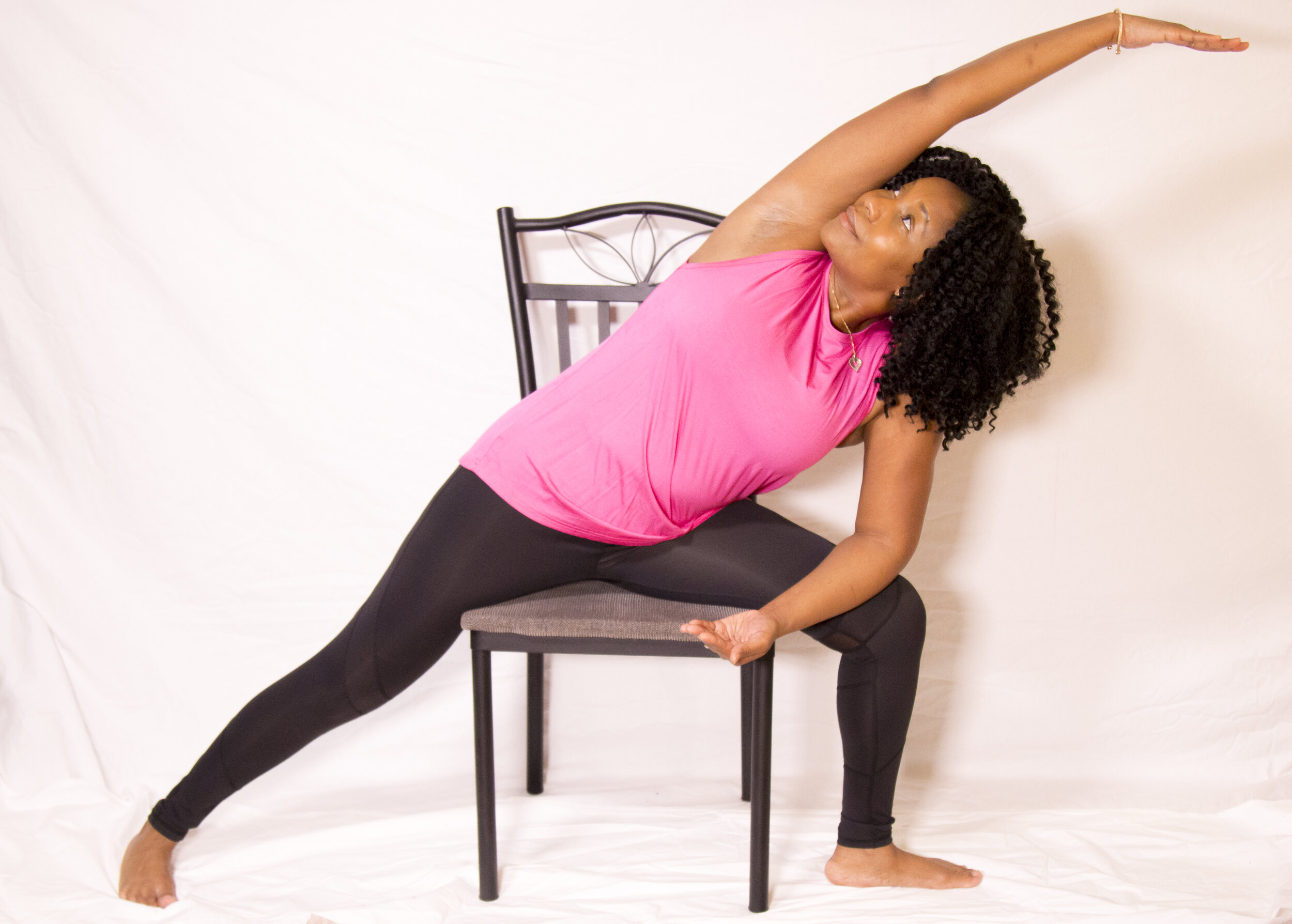
Yoga Practice:
Side Angle Pose
Overview:
The Side Angle Pose, engages the muscles of the calves, thighs and hips to stabilize the legs and open the pelvis, abdominal muscles and spinal muscles to support the spine and the trunk, the shoulder muscles to lift the arms, the front hip as it deeply flexes and abducts, and the calf muscles as they lengthen in the back leg.
Potential Effects:
Strengthens muscles of the legs, seat, abdomen, and shoulders
Stabilizes ankles, knees, hips, and low spine
Stretches the inner thigh muscles
Cultivates strength and endurance
Instructions:
From Side Warrior with your right knee bent and your left leg straight, bring your forearm to your thigh, or your hand to a block or the floor inside your front foot.
Press firmly through the legs and the supporting arm to stabilize the hips and torso as you reach the top arm toward the ceiling.
Turn your head and neck to gaze toward the outstretched fingers.
To release, use the press of the legs and the support of the bottom arm to return to Side Warrior, then place your hands on your hips and turn them forward, lifting the back heel. With an exhale, step your foot forward to Mountain Pose. Rest and integrate, then switch sides.
Side Angle Pose, Front View
Side Angle Pose in a chair, Front View
Side Angle with block, Front View
Precautions:
Heart and circulatory conditions: practice with care and moderation
Weak or sensitive knees: shorten the stance to reduce the knee bend
Sensitive hips: support the bottom hand on a block or the forearm on the thigh
Contraindications:
Recent surgery or acute injury to any key muscles or joints
Chronic or recent injury, pain, or inflammation to any key muscles or joints
Essential Principles:
Side Angle Pose builds on the foundations laid in Warrior Poses, and adds the particular challenge of requiring the musculature of the front hip to stabilize the joint in an unusual position of deep flexion and abduction. This combination of strength and mobility can take time to develop, and if students reach too low too soon, they are likely to compress the hip joint and strain the supporting tissues, or to lose the turn of the hips and torso that they began with in Side Warrior. Side Angle can be made more approachable by placing the bottom hand on a block or the forearm on the thigh, which reduced the degree to which the front hip needs to articulate and adds support. Encourage students to pay attention to and respect the sensation of their body as they explore modifications and find their expression of the pose.
Options:
To alleviate discomfort in the neck, turn the head to the side or down toward the floor.
To simplify the pose and alleviate discomfort in the shoulder, place the top hand on the hip.
To add support and moderate the intensity, place the bottom hand on a block or the forearm on the top of the thigh.
Extended Side Angle Pose: To add challenge and complexity, extend the top arm forward, in line with the spine, rotating the shoulder joint as you reach by turning the armpit toward the ear and the palm toward the floor.
Helpful Hints:
Never overdo or force any yoga movement. If you begin to experience discomfort or pain, release the posture. Find a variation of the posture that serves your body and practice best.
Practice with self-compassion and non-judgement
Side Angle Pose can be done standing, in a chair, or using a block as a prop.
Content from NYCDOE YMTP² curricular materials



